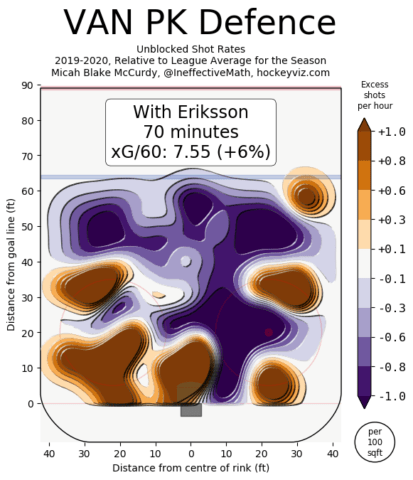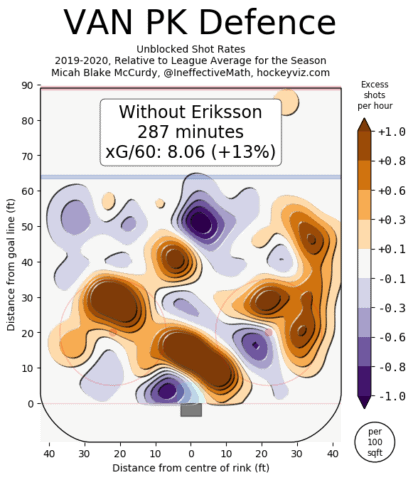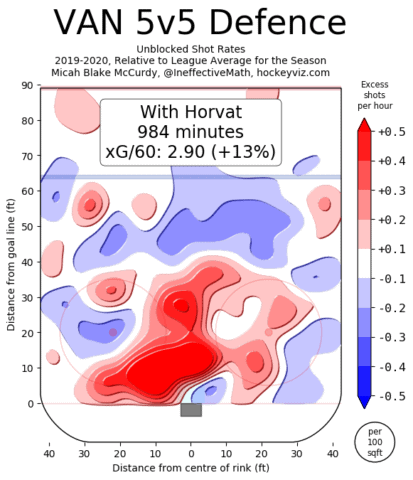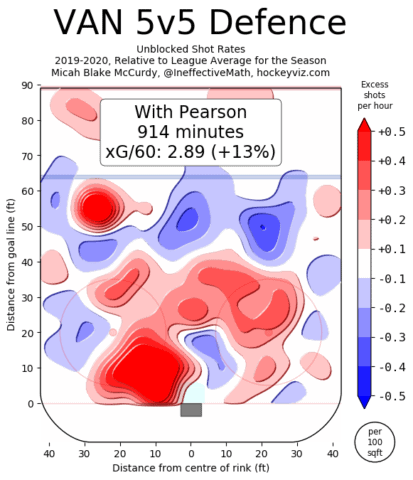Loui Eriksson has been a lightning rod for criticism since he signed with the Vancouver Canucks in July 2016.
When the now-35-year-old Swedish winger signed his six-year, $36 million contract with the Canucks, it was expected he would slot in seamlessly with Daniel and Henrik Sedin to add more scoring punch and a two-way presence. Obviously, that never happened, and general manager Jim Benning has largely seen his major 2016 free-agent acquisition fail to live up to expectations.
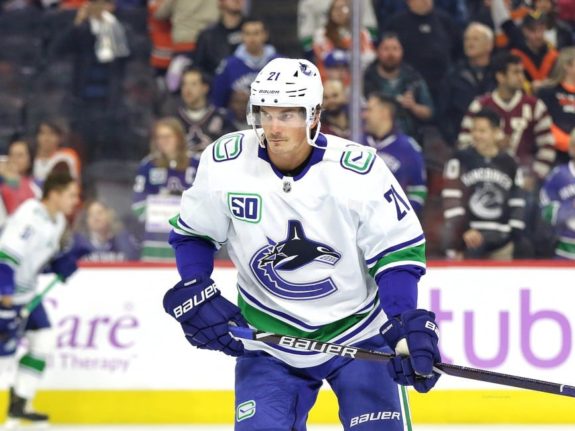
It’ll be impossible for him to make up that lost value. What he can do, however, is have a great postseason for his team and show he still has game. An Eriksson redemption story might not be the playoff headline people would expect, but it’s a very possible one.
The Canucks Need Eriksson
Eriksson has a skill the Canucks lineup covets: penalty killing.
Related: Canucks’ Eriksson Showing Signs of Improvement
Among Vancouver forwards, Eriksson is one of the strongest penalty killers. Say what you want about Tim Schaller, but his departure left a significant void on the Canucks’ penalty kill.
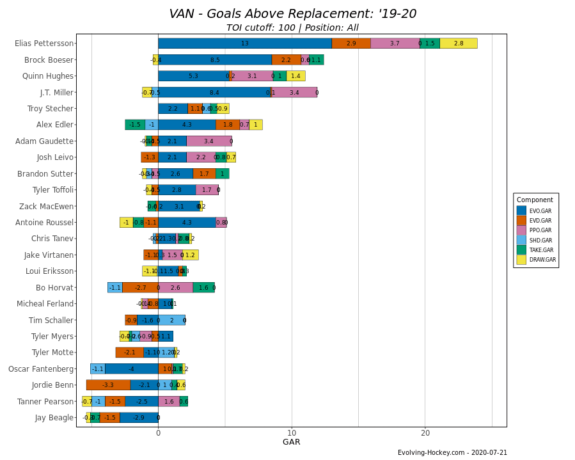
Looking at Evolving-Hockey’s goals above replacement (GAR) model, very few forwards have any penalty kill value. Only the departed Schaller and Tyler Motte have made a positive impact, with Eriksson breaking even. He has fared better than most other forwards who have tried their hand on the penalty kill.
Eriksson actually did a decent job suppressing shots when shorthanded. The purple blobs above are good – opposing players took few shots from these spots. In general, opponents were seven percent more likely to score with him on the bench, a good indicator of his impact on the penalty kill.
It wasn’t just shots in general Eriksson did a good job suppressing. He was an excellent high-danger shot suppressor, limiting the quality of shots taken while shorthanded. Of all Canucks skaters who spent at least 50 minutes on the penalty kill, only Motte gave up less high-danger scoring chances.
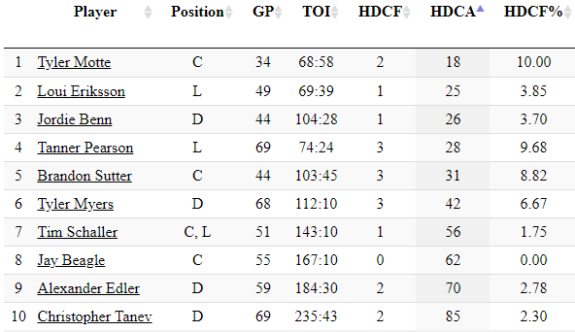
With Brandon Sutter likely to be a scratch, that would leave Motte, Tanner Pearson, and Jay Beagle remaining among regular penalty killers should Eriksson also start on the bench. If Eriksson is scratched, J.T. Miller would likely be tapped to kill penalties, which he surely could do. As The Athletic’s Thomas Drance has argued, Miller needs time to stay as fresh as possible and with Eriksson being a reliable defensive forward, it makes sense for him to be in the lineup.
Where Does He Fit?
It’s a great question, one without an obvious answer. Eriksson may be an elite penalty killer, but given how niche (albeit important) a skill that is, he’ll still need to take a regular shift at even strength.
Related: Revisiting Jim Benning’s Drafts – 2014
Sean Tierney, the Director of Analytics for the Ontario Hockey League’s Hamilton Bulldogs, attempted to create Vancouver’s best possible line combinations based on the line’s ability to drive expected goals. The results were quite interesting.
As expected, the usual first-line sticks out, but a line of Pearson, Bo Horvat, and Eriksson did shockingly well. As we’ve seen in training camp so far, the lines Tierney has theorized are not likely to really happen. Eriksson and Jake Virtanen have frequently been extras, even in head coach Travis Green’s latest attempt at line juggling.
A major key for the Canucks in the 2020 postseason will be Horvat. Having him going and forming a competent one-two punch with Elias Pettersson will be critical to competing with tougher teams like Vegas or Colorado. The Canucks captain had five semi-consistent line combinations this season, ordered from most to least frequent.
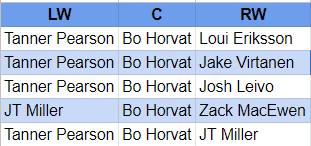
Any combination with Miller should be discarded – he should be playing with Pettersson, be it with Brock Boeser or Tyler Toffoli. Given Josh Leivo’s injury status, that combination can be discarded too. That leaves two lines, three if we include Toffoli slotting in with Horvat and Pearson.
Related: Vancouver Canucks Should Explore a Jake Virtanen Trade
Let’s start by comparing what we know. Amazingly, Horvat and Pearson have done far better with Eriksson on the right flank than Virtanen. They control play, generate shots and chances, and score at a better rate, even though the younger forward is the superior offensive player.
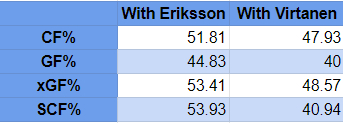
From a fit perspective, Pearson and Horvat have shown they have great chemistry. The problem with Virtanen on the same line is he and Pearson are very similar players. Their statistical profiles from the All-3-Zones (A3Z) Player Comparison Tool are strikingly similar.
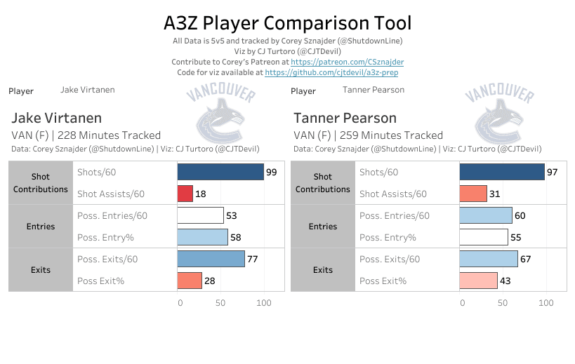
Horvat changed his game this season. When he was with Virtanen, he had two pure shooters on his flanks, forcing him into a more playmaking role. The puck generally died with Eriksson, leaving the Canucks captain and Pearson to do the offensive heavy lifting.

When looking at the 2016-19 seasons, it’s clear how Horvat adapted his game this season to better mesh with his frequent linemates. Prior to the 2019-20 season, he took far more shots while still being the zone entry beast we’ve grown accustomed to.
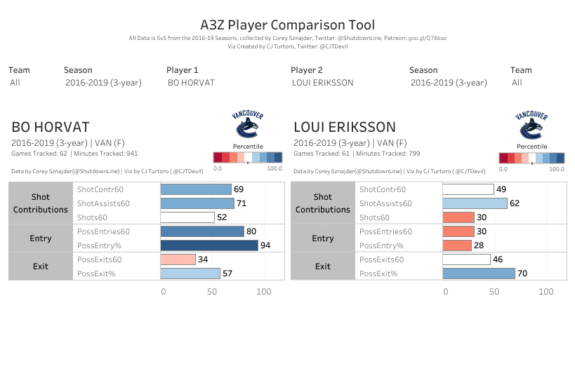
Eriksson also provides a much-needed defensive option on Horvat’s line. The Canucks’ second line had major defensive issues without the Swedish winger on it. The shot maps for the usual second liners are extremely revealing.
Horvat and Pearson didn’t fair well defensively at even strength, giving up a particularly high volume of shots from right in front of the net. Eriksson, despite playing over half of his even-strength minutes on that line, fared much better defensively.
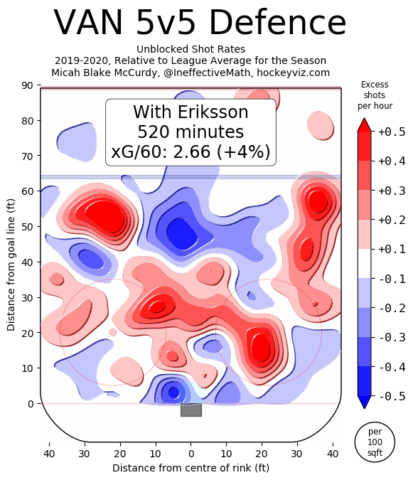
So not only is Eriksson a far better defensive option, but Horvat and Pearson generated better offensive numbers with him too. In terms of lineup fit, it makes sense for this trio to enter the postseason together. Here’s how I would enter the play-in versus the Minnesota Wild if I were the Canucks’ head coach:
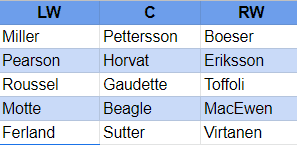
This can be tweaked, too. Realistically, I would prefer if Beagle wasn’t in the lineup, but Green will go with him as the fourth-line centre. If Eriksson isn’t playing well on the second line, he can simply be swapped with Virtanen, or Toffoli could slide up to that line. This is why championship teams need depth.
Learn to Love Loui
Eriksson isn’t going anywhere. TSN1040’s Rick Dhaliwal has long-reported the forward has no intention of walking away from his deal, something many Canucks fans would seemingly cling to for hope.
Barring a shocking demotion to the American Hockey League or a major (and costly; think of what the Toronto Maple Leafs had to give up to be rid of Patrick Marleau) trade, Eriksson is going to be in Vancouver for the duration of his six-year deal. Sure, the Canucks could send him to Utica, but the team would be better served finding a way to utilize the player. For the 2020 postseason, that means using him as a penalty kill and checking-line option. Having depth is critical for a championship team, and he can be a big piece of that depth.
